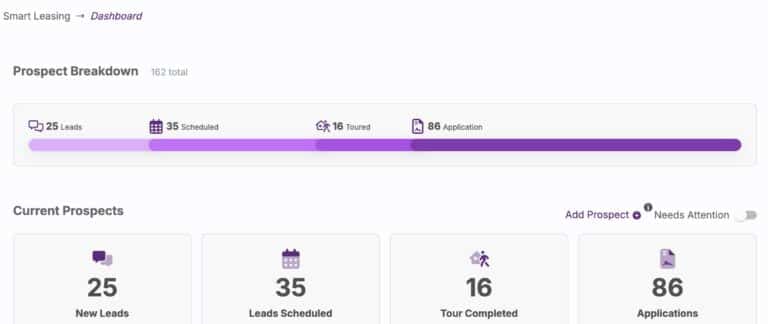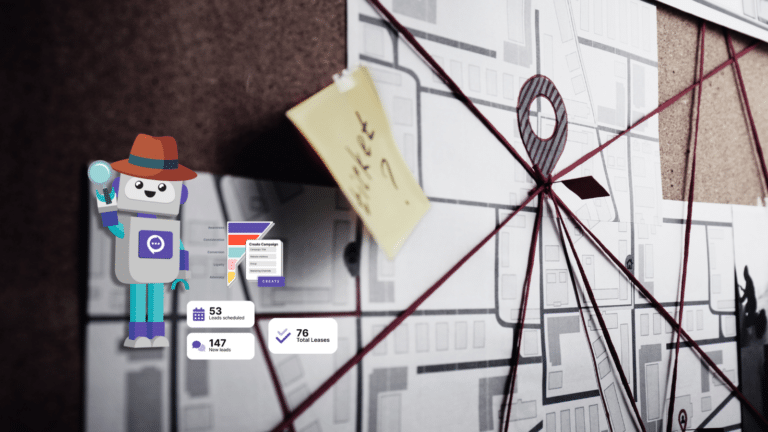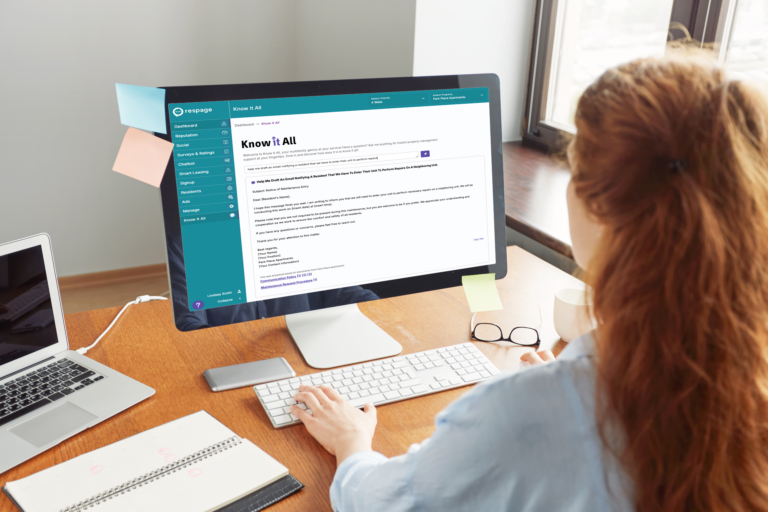Since the COVID-19 lockdowns started last year, chatbots have stepped in to carry a large part of the customer service load across all industries, including Multifamily.
In fact, it’s estimated that by the end of 2021, 85% of customer service interactions will be handled by chatbots or other forms of AI.
While apartment chatbot technology has helped to fill in some staffing gaps due to the virus, that doesn’t mean they will replace human leasing agents at apartment communities. This is because apartment chatbots function best when they’re working in tandem with human agents.
The role of chatbots is to assist and enhance, not compete. They can handle the easy, mundane and repetitive — but very necessary — apartment leasing tasks, like answering queries about availability and amenities. This allows humans to focus on higher-level work that bots simply cannot do, like solving complex problems and creating rapport with apartment prospects and residents.
No matter how advanced they’re programmed to be, all bots will struggle sometimes. This is why the human factor is so critical when it comes to a chatbot’s effectiveness. The best apartment chatbots are designed with a human handoff capability, which can be enabled when the chatbot gets stuck, or when the user requests a live agent.
In order for prospective renters to have a positive and seamless user experience, the handoff from apartment chatbot to human agent needs to be a smooth one. If it’s not, prospects might become frustrated and abandon the interaction altogether.
So, the system should know when to make that transition. In this post, we will show the importance of the human-bot partnership by going over four scenarios that would result in a chatbot calling for reinforcements, ultimately giving prospects the best possible user experience.
User preference
Even though one purpose of an apartment chatbot is to free up a human leasing agent’s time, there will be instances where prospects aren’t interested in interacting with AI. An estimated 6 out of 10 people still prefer to wait for a human agent rather than talk to a chatbot, despite the explosion in chatbot use over the past few years. This is true even when the prospect has a relatively simple question that a bot could answer successfully.
It might seem like offering a live chat option right away would defeat the purpose of having an apartment chatbot in the first place. But, it’s important to meet users where they are, and that means having that option in place from the beginning of the conversation.
Complexity
Chatbots are not omniscient, so there will be instances where they encounter requests that they don’t know how to handle. The bot may ask the user to rephrase their question, or it might ask follow-up questions to gain understanding of the user’s intent. But if these attempts at clarifying the request are too frequent or repetitive, the user may become frustrated.
A better option is to train the apartment chatbot to recognize its limits and to initiate the bot-human handoff when it gets stuck. The bot can let the user know that it can’t help them with their request, but it can transfer them to a human leasing agent who can.
Urgency
Chatbots are great at answering questions about an apartment community’s amenities and pet policies, but it might have trouble helping when it comes to time-sensitive concerns, like moving day questions. Users often have to go down a specific conversation funnel and move through a sequence of dialogs before the bot is able to assess the situation, and that could result in lost time.
Rather than continuing to try helping, the bot should be able to discern when it needs assistance and initiate the transition to a human agent.
User sentiment
Thanks to natural language processing (NLP), many chatbots today are savvy enough to pick up on the mood of a user. This can help the bot determine how the conversation is going, and if it’s not going well, the bot can remedy that.
For example, if an apartment chatbot senses that the prospect is beginning to feel frustrated or impatient, it can offer a “chat with a human agent” option. The user can then choose that option if they feel the chatbot won’t be able to help them.
Conclusion
The purpose of an apartment chatbot is to help capture more leads and enhance a community’s customer service by adding a second set of (virtual) hands to the team. They aren’t meant to replace humans; in fact, humans are the critical element that make apartment chatbots function as they’re supposed to.
The Respage Chatbot is the most robust and experienced chatbot in Multifamily. In addition to having the most advanced features of any bot in the industry, it comes with a Resident Amenity Scheduler included. Contact us for a demo!






